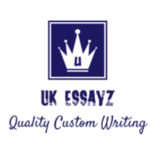Assignment three is an exercise in conducting a trial run critical discourse analysis on forty-five tweets that responded to/took up the hashtag #MeToo. This provided an opportunity to flesh out my coding system and to see if the categories produced are sufficient to provide an illustrative answer to my research question.
Research Design
My project is exploring sexual violence as it continues to be a social justice issue warranting serious discussion and the use of the hashtag #MeToo by survivors of sexual assault and other members of the public. In the first section, I will state the research question I am exploring through a critical discourse analysis of forty-five tweets and how this contributes to the broader social justice issue of sexual violence. The second section will outline my research design to gather evidence to provide an illustrative answer to my research question.
My research design is influenced by Norman Fairclough’s book Analysing Discourse: Textual Analysis for Social Research (2004) as it references key points about conducting a critical discourse analysis. His method is conceptualized as a basket that holds many different things and my supervisor Dr. Hannah Dyer thought it to be a good fit in allowing the project to be about the themes that emerged and not about the people who produced the content. Choosing this method allows me to analyze the discourse that is being shared through the tweets.
The key takeaways from Fairclough’s critical discourse methods are: texts have social effects which means it can either reinforce or change values, beliefs, attitudes and knowledge (Fairclough, 2004, pp. 8-9), texts are symbols of the world that can add to reaffirming and/or shifting power, exploitation and domination amongst social relations (p. 9) and the categories constructed are open to change (p. 15). Words are never neutral, they are influenced by politics, history, lived experiences and social location (McGregor, 2003).
